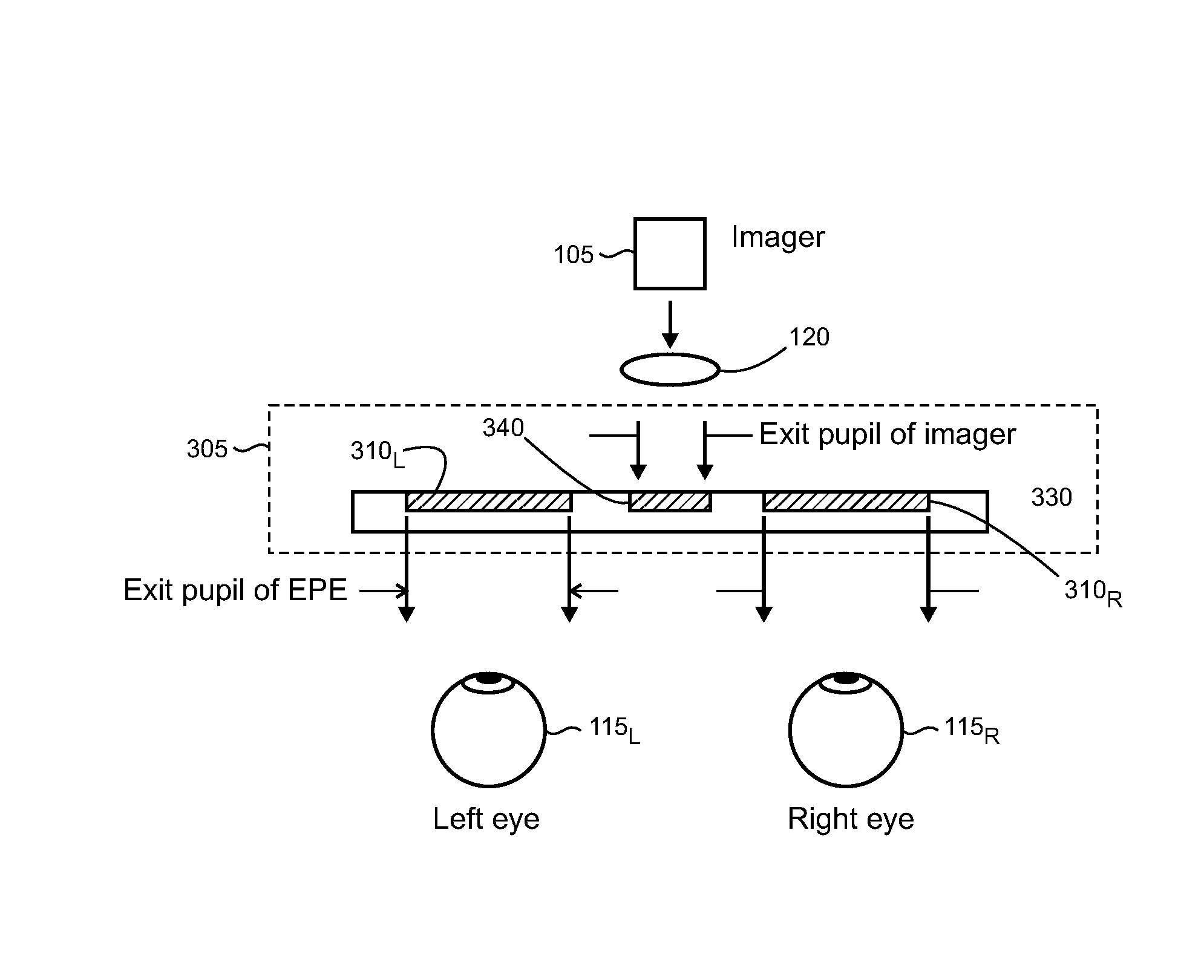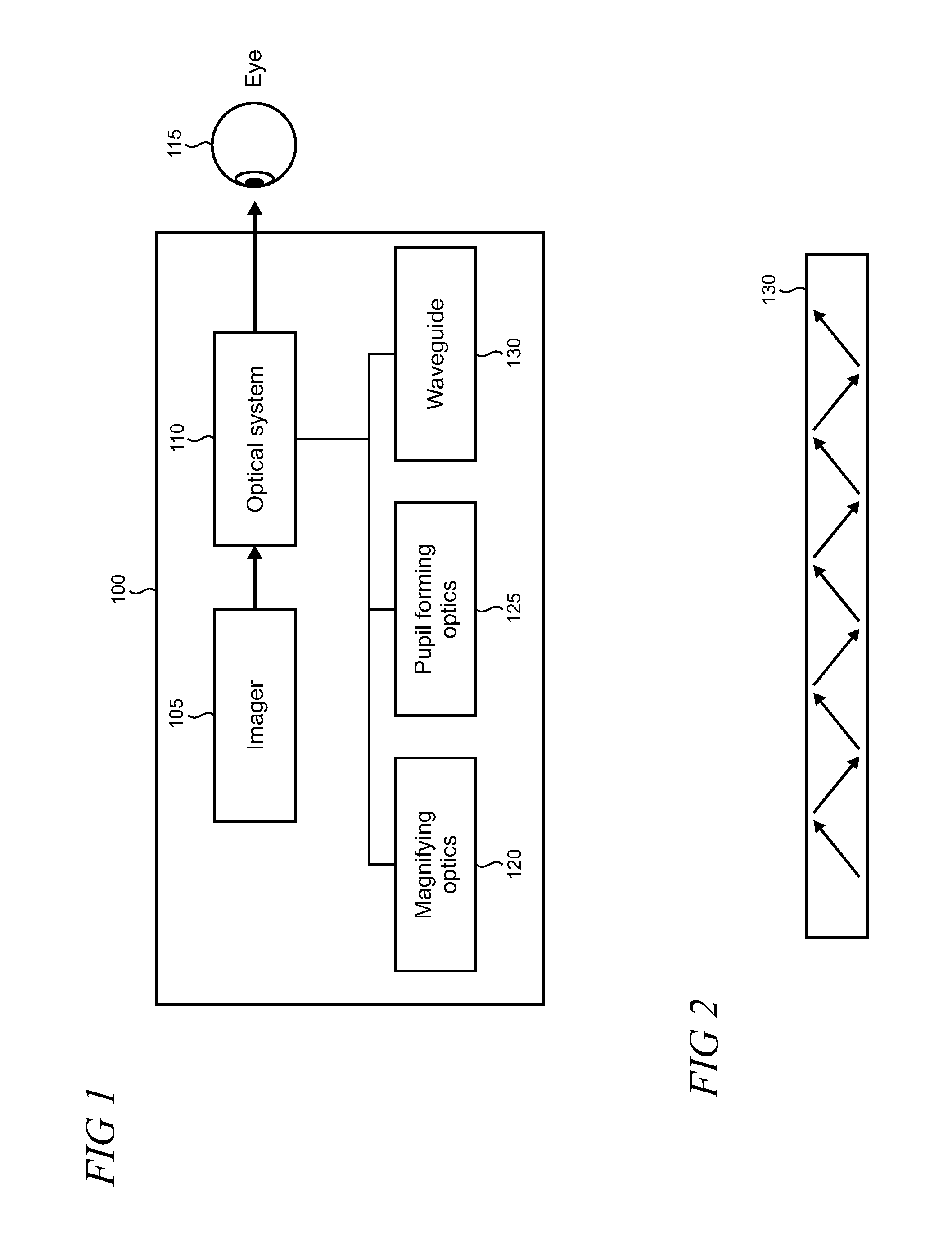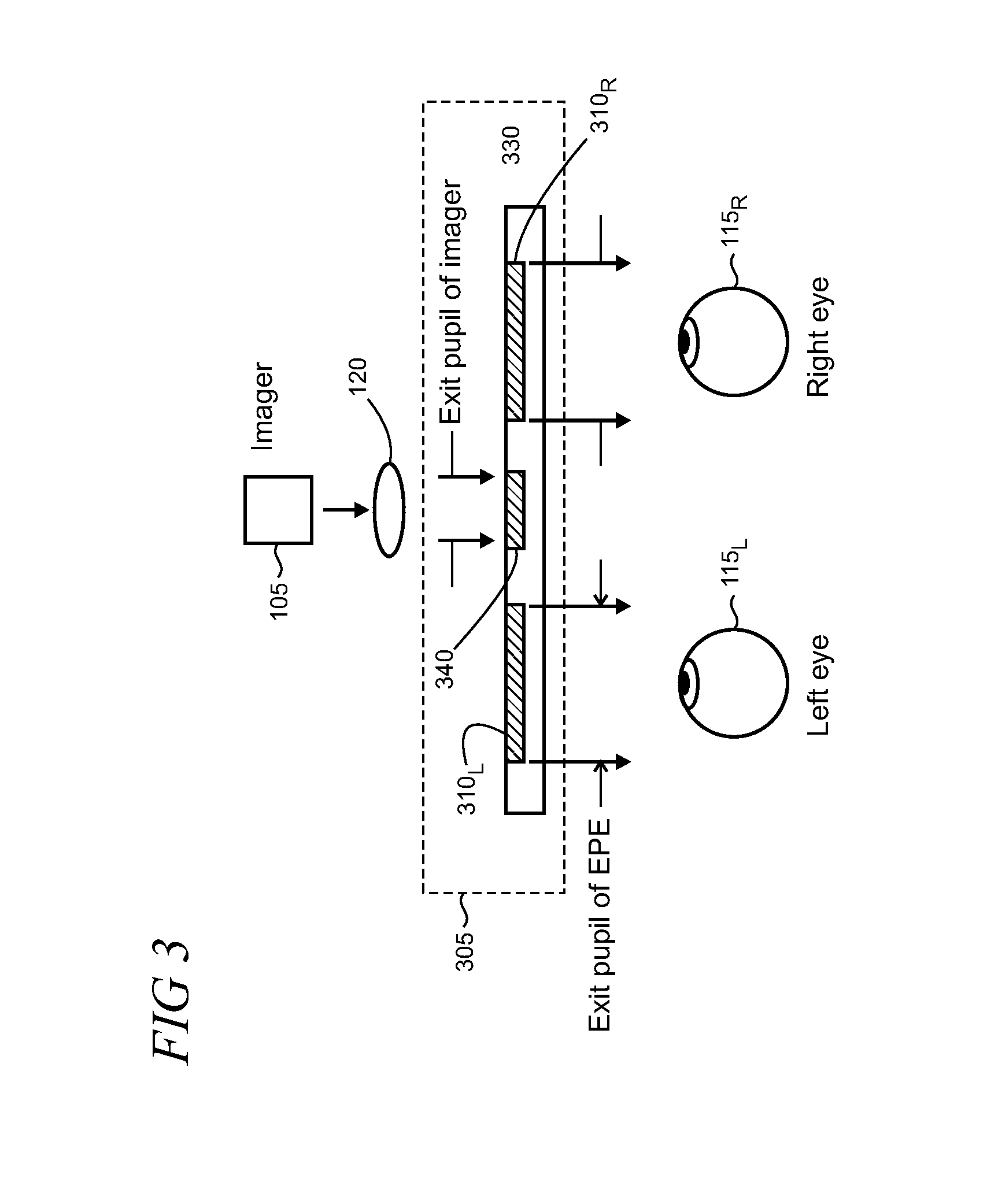Diffractive optical elements with asymmetric profiles
a technology asymmetric profiles, applied in the field of diffractive optical elements with asymmetric profiles, can solve the problems of less optimal optical properties and more pronounced banding of bands, and achieve the effects of reducing “banding” and minimizing system weigh
- Summary
- Abstract
- Description
- Claims
- Application Information
AI Technical Summary
Benefits of technology
Problems solved by technology
Method used
Image
Examples
Embodiment Construction
[0018]FIG. 1 shows a block diagram of an illustrative near eye display system 100 which may incorporate diffractive optical elements (DOEs) with asymmetric profiles. Near eye display systems are frequently used, for example, in head mounted display (HMD) devices in industrial, commercial, and consumer applications. Other devices and systems may also use DOEs with asymmetric profiles, as described below, and it is emphasized that the near eye display system 100 is intended to be an example that is used to illustrate various features and aspects, and the present DOEs are not necessarily limited to near eye display systems.
[0019]System 100 may include an imager 105 that works with an optical system 110 to deliver images as a virtual display to a user's eye 115. The imager 105 may include, for example, RGB (red, green, blue) light emitting diodes (LEDs), LCOS (liquid crystal on silicon) devices, OLED (organic light emitting diode) arrays, MEMS (micro-electro mechanical system) devices, ...
PUM
 Login to View More
Login to View More Abstract
Description
Claims
Application Information
 Login to View More
Login to View More - R&D
- Intellectual Property
- Life Sciences
- Materials
- Tech Scout
- Unparalleled Data Quality
- Higher Quality Content
- 60% Fewer Hallucinations
Browse by: Latest US Patents, China's latest patents, Technical Efficacy Thesaurus, Application Domain, Technology Topic, Popular Technical Reports.
© 2025 PatSnap. All rights reserved.Legal|Privacy policy|Modern Slavery Act Transparency Statement|Sitemap|About US| Contact US: help@patsnap.com



